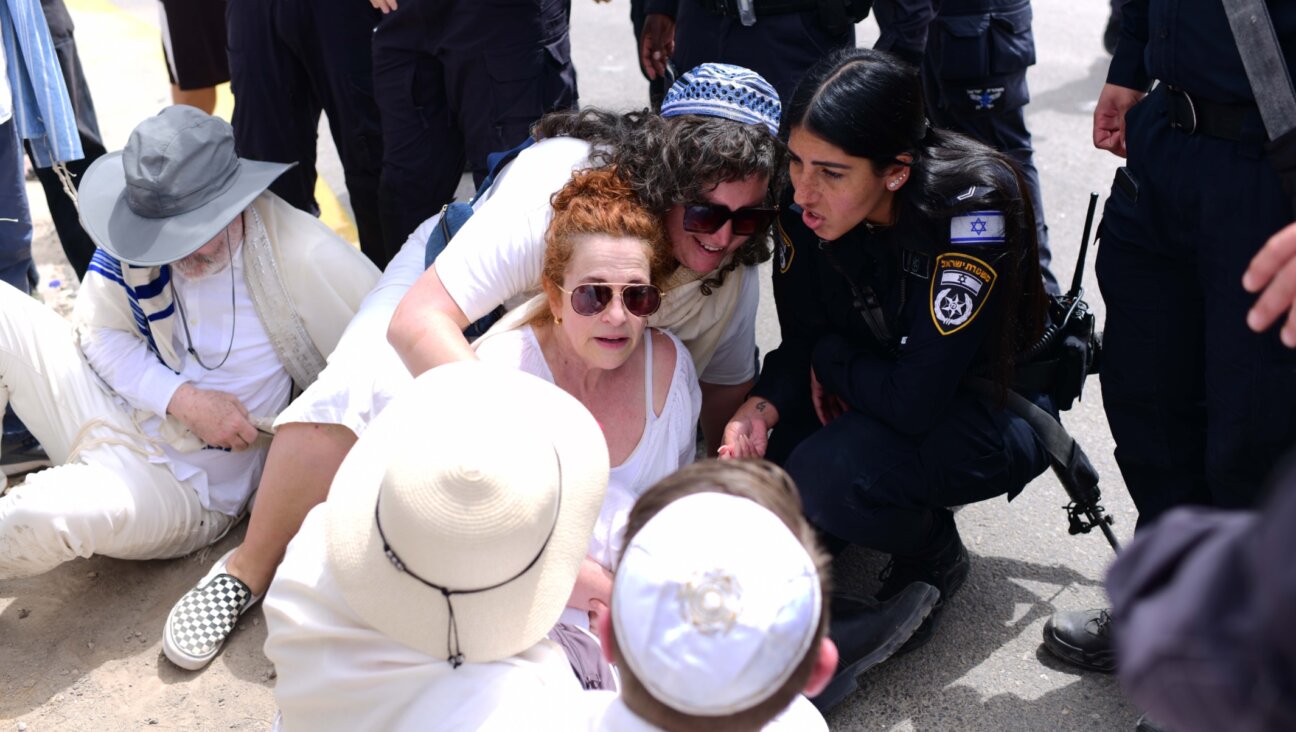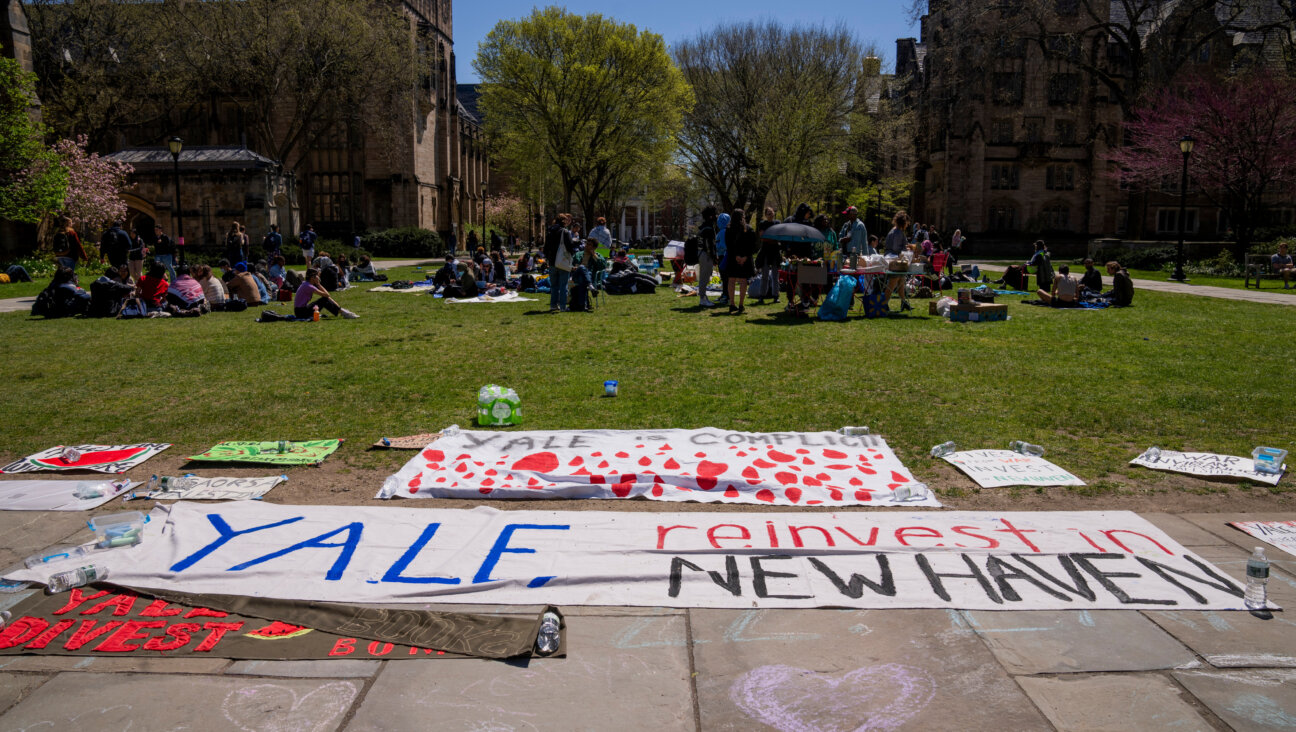The Sensual Embrace of Elinor Carucci’s Camera
Maybe you’ve already seen Elinor Carucci’s breasts, maybe not. They’re beautiful and have even appeared in The New York Times Magazine. Just don’t look for them in the award-winning photographer’s second monograph, “Diary of a Dancer” (Steidl, 2005). There, it’s her belly that’s bare.
Carucci’s first collection, “Closer” (Chronicle Books, 2002), elicited critics’ praise for the poignant photographs of her mother, father, grandparents, husband, cousin and self. Her vividly colored images capture mainly quiet moments at home with a candid intimacy that makes frequent nudity and near-nudity secondary to emotional honesty. Her mother, a classic beauty and the photographer’s first subject when she picked up her father’s camera at age 15, is featured heavily. In “My Mother and I Laughing,” for example, the two sit chuckling on a bed, Carucci in black panties and bra, her mother in a white T-shirt. Many of Carucci’s pictures are sensual — like “Wedding Rings,” of Carucci and her husband head to toe in a bath, their rings sharing a visual plane — but none are lewd. In some, she zooms in on the body’s interactions with the inorganic world: a zipper’s indentation on skin, an eyelash curler sculpting, jagged stitches on a finger, tweezers yanking a nipple hair.
One picture in “Closer” hints at what is to come: “Counting Tips” finds Carucci tallying a mound of crinkled bills. This was taken after a night performing as a professional Middle Eastern dancer (aka belly dancer). This art is at the heart of “Diary of a Dancer,” the photographer’s striking visual memoir — shot with a Horizon panoramic swing lens — of the three years she spent performing throughout New York City and nearby New Jersey.
“I performed to everybody: high class, middle class, low class,” she told the Forward in a café near her apartment in Manhattan’s Chelsea. Her audiences were “a lot of ethnic communities: some of them Israelis like me; some Jewish — Jewish Bukharian, like me also, or Jewish Moroccans — a lot of Indian people; Punjabis; South Americans. It was experiencing New York as it is — the immigrants, the millions of different kinds of people.”
“It’s not like other dances, where you go up on the stage and it’s very sterile and isolated. Here, you’re really with the people. You’re holding their hands, and you’re kissing the babies; you smell the food around you,” Carucci said. “You’re immersed.”
“Diary of a Dancer” comes out in late June, when the vivid photographs will be exhibited at the Reico/Maresca Gallery in New York, but her earlier work is now on view in Geneva and Moscow. Her images can be found in museum collections — the Museum of Modern Art, the International Center of Photography, the Jewish Museum, the Museum of Israeli Art and others — as well as in a slew of magazines, including The New Yorker, New York, W, Vogue, Nerve and The New York Times Magazine. She teaches, too: at Harvard, the School of Visual Arts and the International Center of Photography. And her penetrating eye has won her a Guggenheim fellowship, an ICP Infinity Award and other accolades.
Carucci, who turns 34 in June, grew up in Jerusalem, where she attended an arts high school. Until she discovered photography, she focused on piano and theater, and she said that she was “mediocre,” “never too good or too bright.” The camera changed that. “I’m alive with photography.” In 1995, after serving in the Israeli army and completing a Bachelor of Fine Arts degree in photography at the Bezalel Academy of Art and Design, she came to New York. “I moved here for my photography, and it was the trigger, but many things in Israel, like the constant warning for loss of life, like the fear… I just sometimes couldn’t take it.”
Her brows unfurrow and she laughs, describing her earlier naiveté: She thought she’d arrive in New York, stay for a few months and leave with a book contract. “If I’d been aware of how hard the market is, I would never have come,” she said. “Thank God for my stupidity!”
While waiting for it to “happen,” Carucci spent nights performing Middle Eastern dance, which she started studying at 20 under the tutelage of Yael Moav, whose Jerusalem company she joined. “I moved here, at 24, and continued dancing and performing. I danced for two years at Casa La Femme, a restaurant in Soho. And then I started working with those two agents of mine, where we performed all over.” She danced until she found out she was pregnant with twins, Emmanuelle and Eden. Carucci said her new arrivals have — not surprising for a photographer whose work mirrors and embodies her life — become her newest subjects.
And dancing? “I’m not giving it up!” she said emphatically. “I dance for my children a lot. I’m waiting for the belly to come down and the stretch marks to fade before I feel comfortable enough to perform… I think when they’re 1 year old, I’m going to go back, maybe once a week or something like that, I hope. If anyone will pay me.”
“Diary of a Dancer” will be on view June 23-August 19 at Ricco/Maresca Gallery, 529 West 20th St. (212-627-4819 or www.riccomaresca.com). Please visit www.elinorcarucci.com for more information about the artist.
Erica Brody is a contributing editor to the Forward and to The Brooklynite, a new magazine about urban affairs and culture. Her reporting appears regularly in ARTnews.

I hope you appreciated this article. Before you go, I’d like to ask you to please support the Forward’s award-winning journalism this Passover.
In this age of misinformation, our work is needed like never before. We report on the news that matters most to American Jews, driven by truth, not ideology.
At a time when newsrooms are closing or cutting back, the Forward has removed its paywall. That means for the first time in our 126-year history, Forward journalism is free to everyone, everywhere. With an ongoing war, rising antisemitism, and a flood of disinformation that may affect the upcoming election, we believe that free and open access to Jewish journalism is imperative.
Readers like you make it all possible. Right now, we’re in the middle of our Passover Pledge Drive and we still need 300 people to step up and make a gift to sustain our trustworthy, independent journalism.
Make a gift of any size and become a Forward member today. You’ll support our mission to tell the American Jewish story fully and fairly.
— Rachel Fishman Feddersen, Publisher and CEO
Join our mission to tell the Jewish story fully and fairly.
Only 300 more gifts needed by April 30























